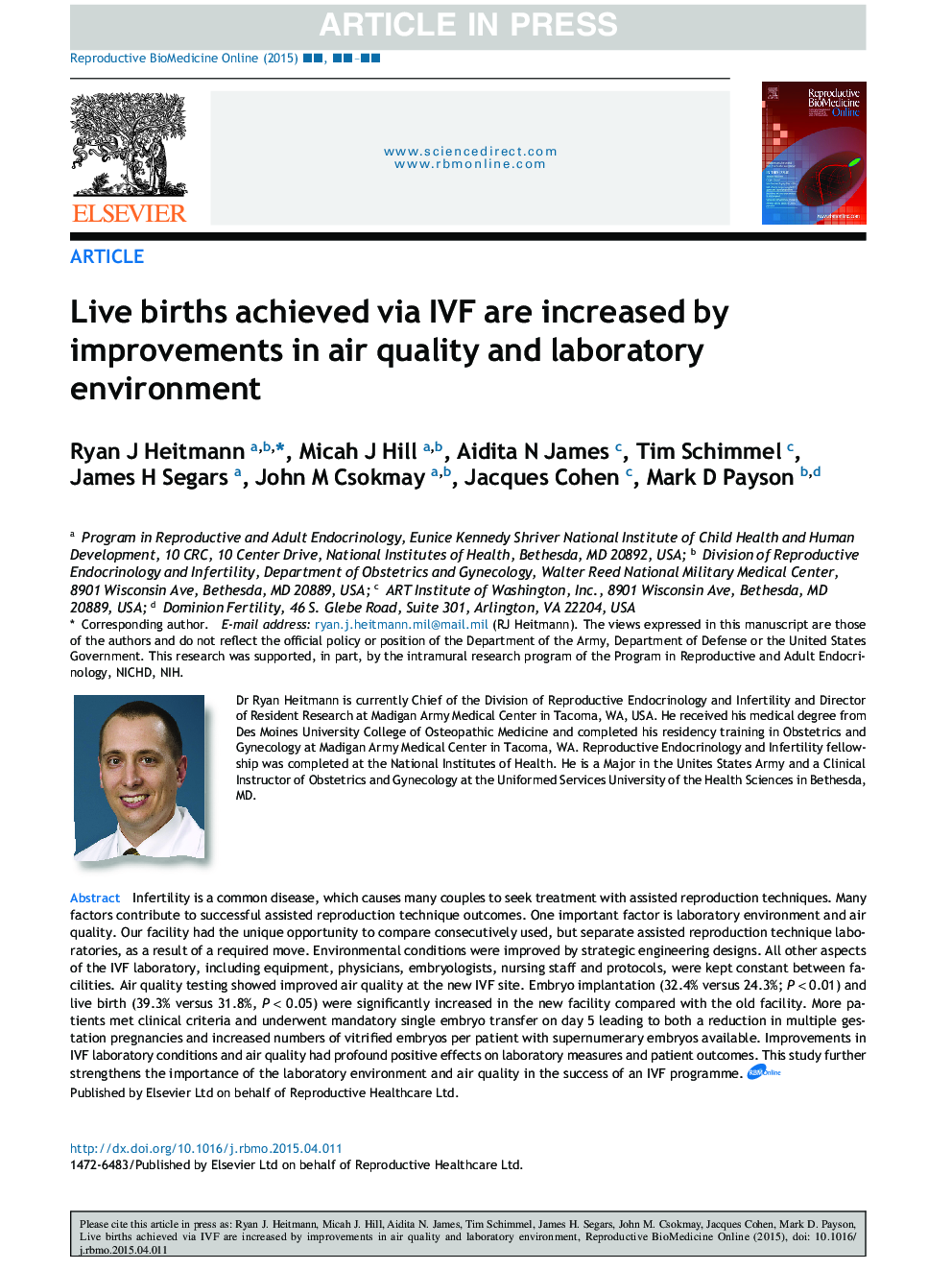| Article ID | Journal | Published Year | Pages | File Type |
|---|---|---|---|---|
| 6188778 | Reproductive BioMedicine Online | 2015 | 8 Pages |
Abstract
Infertility is a common disease, which causes many couples to seek treatment with assisted reproduction techniques. Many factors contribute to successful assisted reproduction technique outcomes. One important factor is laboratory environment and air quality. Our facility had the unique opportunity to compare consecutively used, but separate assisted reproduction technique laboratories, as a result of a required move. Environmental conditions were improved by strategic engineering designs. All other aspects of the IVF laboratory, including equipment, physicians, embryologists, nursing staff and protocols, were kept constant between facilities. Air quality testing showed improved air quality at the new IVF site. Embryo implantation (32.4% versus 24.3%; P < 0.01) and live birth (39.3% versus 31.8%, P < 0.05) were significantly increased in the new facility compared with the old facility. More patients met clinical criteria and underwent mandatory single embryo transfer on day 5 leading to both a reduction in multiple gestation pregnancies and increased numbers of vitrified embryos per patient with supernumerary embryos available. Improvements in IVF laboratory conditions and air quality had profound positive effects on laboratory measures and patient outcomes. This study further strengthens the importance of the laboratory environment and air quality in the success of an IVF programme.
Related Topics
Health Sciences
Medicine and Dentistry
Obstetrics, Gynecology and Women's Health
Authors
Ryan J. Heitmann, Micah J. Hill, Aidita N. James, Tim Schimmel, James H. Segars, John M. Csokmay, Jacques Cohen, Mark D. Payson,
